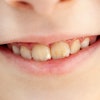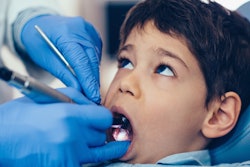Pediatric dental patients with iron deficiency anemia (IDA) may be more than three times as likely to develop caries compared to those without the condition, according to a review recently published in the Journal of Human Nutrition and Dietetics.
Furthermore, this association may be due to factors, including reduced saliva function and the loss of iron’s antibacterial effects, the authors wrote.
“Our findings suggest that raising awareness of the effects of IDA on dental health among medical professionals who treat children and adolescents (dentists, pediatric dentists, nutritionists and pediatricians) is essential,” wrote the authors, led by Mohammed Taib Fatih of the Komar University of Science and Technology in Iraq (J Hum Nutr Diet, October 27, 2025, Vol. 38:6, e70149).
The study sought to explore the relationship between IDA and caries through a systematic review. An electronic search was conducted for studies published before January 2025 that examined this association in patients ages 18 and younger, they wrote.
Only observational studies, including cross-sectional, case-control, or cohort designs, were eligible for inclusion. Studies were included if they assessed the link between IDA and caries in children or reported differences in hematological indices such as hemoglobin, ferritin, and mean corpuscular volume (MCV) between children with and without caries.
Five systematic reviews and meta-analyses ultimately met the inclusion criteria. The pooled results showed a significant association, with children with IDA being over three times more likely to have dental caries than those without anemia (odds ratio [OR] = 3.64, 95% confidence interval [CI]: 2.45 to 5.4, p < 0.0001), they wrote.
Although children with caries had lower hemoglobin levels (mean difference [MD] = -2.2 g/dL, 95% CI: -4.59 to 0.19, p = 0.071), the result was not statistically significant and showed high heterogeneity and publication bias. Similarly, pooled analyses for serum ferritin (MD = -3.96, 95% CI: -8.48 to 0.57, p = 0.087) and MCV (MD = -1.96 fL, 95% CI: -4.02 to 0.10, p = 0.062) indicated lower levels in children with caries but without statistical significance.
Nevertheless, the study had limitations. Many studies did not control for confounding factors such as socioeconomic status, which may limit how the findings can be interpreted, the authors added.
“These results could assist healthcare professionals and policymakers in identifying individuals at risk and implementing interventions to optimise outcomes in the battle against dental caries and anemia,” they concluded.




















